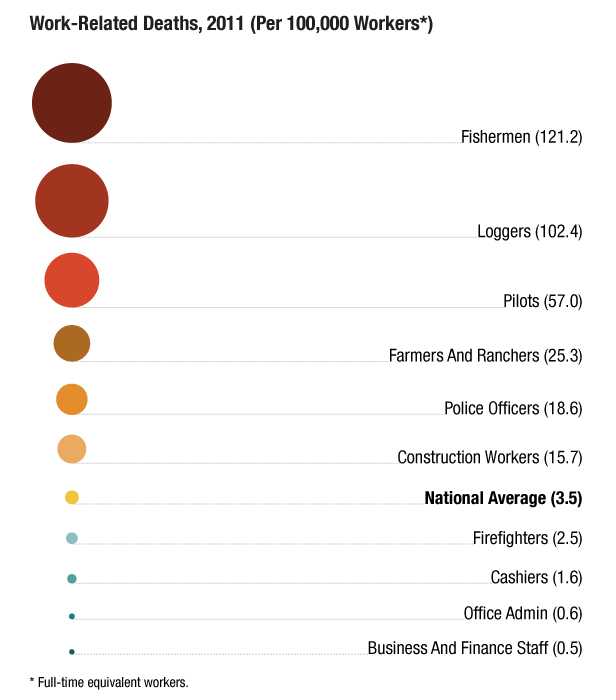
Fishermen hauling in a trawl.
Today, fishing once again topped the Bureau of Labor Statistics’ list of most dangerous jobs in the U.S. In 2010, commercial fishing had a fatality rate per 100,000 full-time-equivalent employees 33 times the average rate for U.S. workers. Although fortunately fishing’s fatality rate did decrease from 2009, it remains true that fishermen faced the highest chance of dying on the job compared with other occupations in the U.S.
Many things make fishing dangerous, but the way we regulate the industry can make things worse. For example, regulators often manage fishing by limiting when fishermen can be on the water, such as by setting short seasons, allocating a limited number of days at sea or shutting down a fishery when too many fish have been caught.
In order to catch enough fish to stay in business, fishermen must race to catch them before others do, which can lead to fishing in dangerous weather conditions, keeping exhausted crews on the water and overloading boats with excessive gear. All of these methods maximize catch in the short term but risk lives.
In contrast, catch shares give fishermen a secure amount of seafood they don’t have to race their peers to catch. Catch shares provide flexibility to choose when to fish based on the weather and market conditions. Read More »













